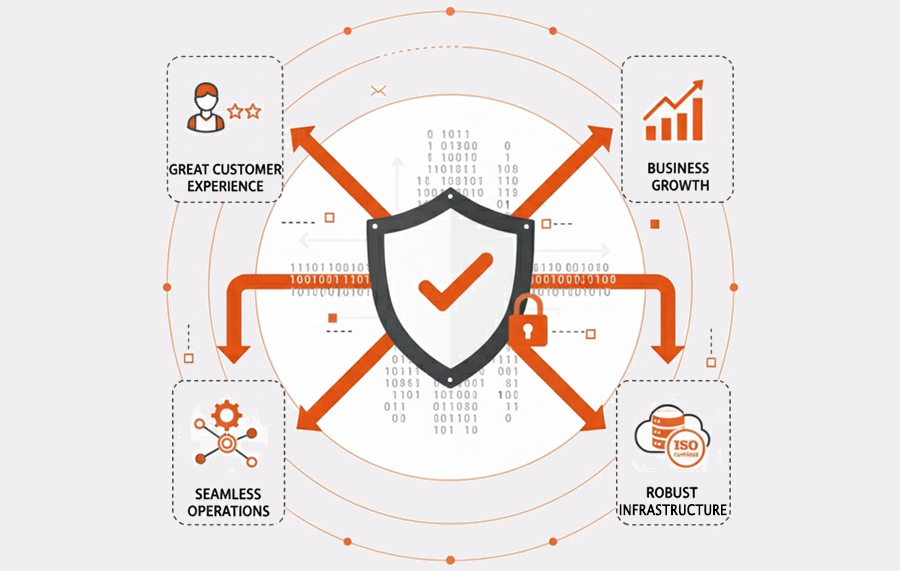17 December 2024
High ROI with Print Marketing: Why Print Still Matters

High ROI with Print Marketing: Why Print Still Matters
In today's digital world, businesses often focus heavily on online marketing. With the dominance of social media, email campaigns, and search engine advertising, traditional print marketing can easily be overlooked. However, print marketing is far from obsolete—it's seeing a resurgence and can deliver high returns on investment (ROI), especially when compared to digital channels. Here's how print marketing can enhance your business strategy and deliver significant results.
Print Marketing vs. Digital Marketing
One of the main advantages of print marketing is its effectiveness in customer engagement. Studies show that print and direct mail campaigns generate a 4.4% response rate, significantly higher than digital marketing's average of 0.12%. While digital marketing offers the allure of instant reach at lower costs, these numbers tell a different story. Digital channels like email and social media ads are often ignored, overlooked, or even blocked by overwhelmed users. In contrast, print materials—especially direct mail—create a tangible presence that is more personal and harder to dismiss.
Brand Building & Recall
Beyond immediate conversions, print marketing is highly effective in building brand recognition and trust. Print materials leave a longer-lasting impression compared to their digital counterparts. According to RAMetrics data from 2022-2023, print ads deliver a recall rate of 78%, 48 percentage points higher than digital ads. This superior recall is due to print's ability to engage multiple senses, such as touch and sight, and even smell when high-quality materials are used. These multi-sensory experiences help customers remember your brand more vividly, making print a powerful tool for long-term brand-building efforts.
Measuring ROI with New Technology
Historically, one of print marketing's challenges was tracking its effectiveness. Marketers could measure how many materials were sent out but had little insight into how many people engaged with them. Today, new technology has made it easier to track and measure print campaigns. QR codes, personalised URLs (PURLs), and custom discount codes allow businesses to monitor customer interaction with print materials in real-time. These innovations, when paired with analytics software, provide detailed insights into the success of print campaigns. With Web-to-Print templates and automation technology it is easier than ever to add these tracking metrics to printed items.
Direct Mail, in particular, delivers impressive results, with an ROI averaging 112%, outperforming digital counterparts such as Email (93%), Paid Search (88%), and Social Media (81%). With these tracking tools, marketers can now measure the impact of print campaigns as precisely as they do digital ones, making print a more quantifiable and accountable marketing method.
Reaching Younger Audiences
It's often assumed that younger generations are more inclined toward digital content over traditional formats. However, research suggests otherwise. A study found that over 92% of 18 to 23-year-olds find printed content easier to read than digital alternatives. Despite being digital natives, younger generations respond positively to print, perceiving it as more authentic, less intrusive, and easier to concentrate on compared to the overwhelming nature of online ads. This makes print marketing effective in reaching and engaging audiences across age groups.
Ad-blocking Technology
A significant challenge for digital marketers is the widespread use of ad-blocking technology. At least 47% of consumers use ad-blockers, making it even more difficult for brands to get their messages seen. Print marketing sidesteps this issue entirely. Print ads are immune to being blocked, ensuring your message reaches your audience without interference. This is a major advantage, especially in an environment where consumers are becoming more selective about the digital content they engage with.
The Bottom Line
While digital marketing has transformed how businesses reach their audiences, print marketing still plays a critical role in driving engagement, building trust, and offering higher response rates. Whether you want to stand out in a crowded market or leave a lasting impression, print marketing provides a tangible, reliable way to connect with your audience.
With modern tracking tools, the ROI of print marketing can now be measured as accurately as any digital campaign. For businesses seeking high-impact marketing, print offers a level of engagement that digital channels cannot easily match. From superior response rates to better brand recall, print continues to deliver value in ways often underestimated in today's digital-first world.


